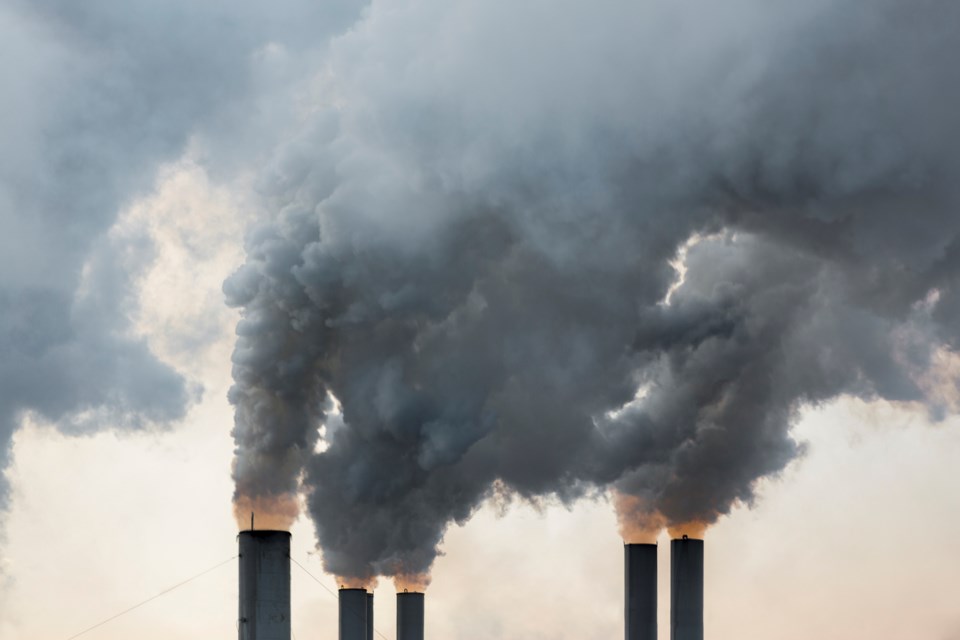The amount of greenhouse gases Canada released every year has once again inched up, but remains below levels seen before the COVID-19 pandemic, the latest national inventory reported Thursday.
Emissions, which are reported on a two-year delay as carbon equivalents, climbed to 708 megatonnes in 2022, up 9.3 megatonnes or 1.3 per cent from the previous year. But that’s still 5.9 per cent below pre-pandemic levels and 7.1 per cent below where they stood in 2005, the base year from which emission reductions are measured, according to the inventory.
That’s still far off pace from Canada’s target of reducing greenhouse gas emissions 40 to 45 per cent below 2005 levels by 2030.
“Canada’s climate policies are starting to work,” said Janetta McKenzie, the oil and gas manager at the energy think tank Pembina Institute.
“We've seen emissions also starting to go down and that's a good thing. But those trends still aren't ambitious enough, aren't adequate enough to meet our climate targets.”
Buildings lead carbon spike, but oil and gas remain biggest emitter
Since the last emissions inventory, emissions from buildings have gone up 4.7 per cent, while carbon pollution from transport has climbed four per cent.
The oil and gas industry, which at 31 per cent accounts for the most emissions of any sector, had its emissions inch up by 0.4 per cent — a number which could have been much larger had it not been for stiffer methane regulations, said McKenzie.
Some provinces are performing better than others. Alberta alone accounts for 38 per cent of Canada’s total carbon footprint, with emissions rising 7.4 per cent since 2005.
“Some sectors need to be decarbonizing faster, especially sub sectors like the oil sands, which are not seeing really meaningful emissions reductions,” McKenzie said.
When it comes to progress, the national inventory attributes the emission declines to fuel switching, increased efficiency, modernized industry, and larger changes to Canada’s economy.
Emissions from electricity dropped 7.8 per cent year over year, according to the national inventory.
New Brunswick, Nova Scotia and Ontario, which have moved away from coal-fired power plants in recent years, saw their emissions decline 38 per cent, 35 per cent and 23 per cent, respectively, between 2005 and 2022. In B.C., where more electricity has long been generated by hydro power, emissions dropped 2.5 per cent over the same period.
In a series of recommendations to provinces, the Pembina Institute warned Thursday that governments risk undoing progress in phasing out of coal power plants, if instead they switch to “unabated gas-fired electricity.”
The group called on governments to build out low-carbon electricity generation through wind and solar projects, and hook them up to a modernized grid instead.
To achieve Canada’s targets, Pembina Institute said provincial and federal governments should back a building retrofit industry to decarbonize 600,000 homes and 30 million square metres of commercial space by 2040.
McKenzie also pointed to a proposed 2030 federal emissions cap on the oil and gas sector, which she said could help cut into emissions from Alberta’s oil sands.
Questions over missing megatonnes
The latest emissions inventory includes “significant methodological improvements” connected to emissions from oil and gas and forestry. That led to a 29 megatonne upward revision of previous inventories.
Earlier this week, eight Canadian non-governmental groups — including Nature Canada, Conservation North and the David Suzuki Foundation — sent a letter to experts at the United Nations who review country emission inventories. In it they point to a recently peer-reviewed study that found between 2005 and 2021, forestry and logging led to 90.8 megatonnes in yearly average net emissions, much higher than the -4.7-megatonne sink reported by the Canadian government.
The heads of the eight NGOs state that by underreporting its forestry emissions, Canada “calls into question the comprehensiveness of its climate plan.”
The letter also cites a March 2023 audit from Commissioner of the Environment and Sustainable Development Jerry DeMarco, which found the federal government “did not provide a clear and complete picture” of greenhouse gases from forestry and called for an independent expert review to assess any gaps. Since then, 29 MPs and Senators called on the government to “separately and transparently report GHG emissions attributable to logging.”
Earlier this year, the Canadian government said it counts forestry emissions in line with international standards.
But according to Nature Canada's Michael Polanyi, the latest inventory once again failed to count emissions from wildfires while allowing the forestry sector to take credit for the carbon naturally absorbed when forests grow back.
As Polanyi put it in an email: “they haven't changed their biased and unbalanced methodology.”




